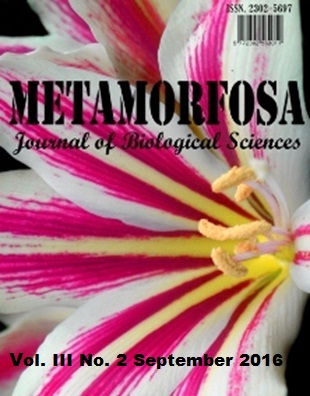KAJIAN ANATOMI KAYU PADA TIGA EKOTIPE Pinus merkusii SUMATERA DAN POTENSINYA SEBAGAI INDIKATOR PERUBAHAN IKLIM
Abstract
Recently, climate change is the one of most important environmental issue. Climate variability can be recorded by tree growing through the growth ring. Growth ring formed by cambial activity were examined in wood anatomy. In Sumatra, there are three ecotypes Pinus merkusii, namely ecotypes Kerinci, Tapanuli, and Aceh which can be distinguished morphologically. This study aims to knowing the wood anatomical characteristics of the three ecotypes and determine the potential as climate indicator. This study was conducted in October 2014 until June 2015. Sample of Kerinci ecotype was collected in Kerinci Seblat National Park, Tapanuli ecotype in Dolok Sibualbuali Natural Reserve and Aceh ecotype in Gunung Leuser National Park on a height of 130 cm using increment borer and cut on the main stem 5×5 cm for anatomical sample. Results from this study indicate that ecotype Kerinci and Tapanuli showed earlywood and latewood boundary exposing the clear growth ring, whereas in Aceh ecotype unclear. Tapanuli ecotype have the thickest tracheid diameter than ecotype Kerinci and Aceh. Ecotypes of Kerinci, Tapanuli, and Aceh has homoceluler and uniseriate ray where Aceh ecotype have the longest ray. Furthermore, Kerinci and Tapanuli ecotype have potential as climate indicator eventhough showed negative correlation, that Tapanuli ecotype show the best result and recommended in dendrochronology study.





